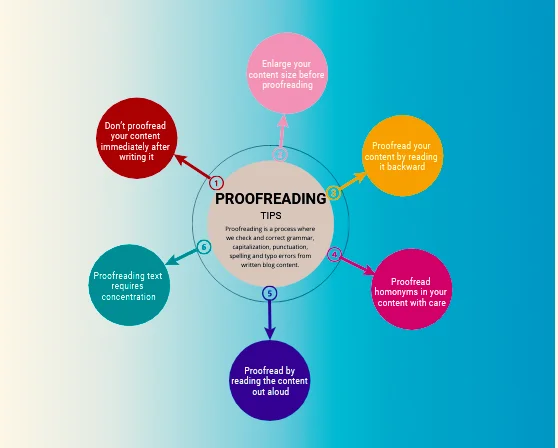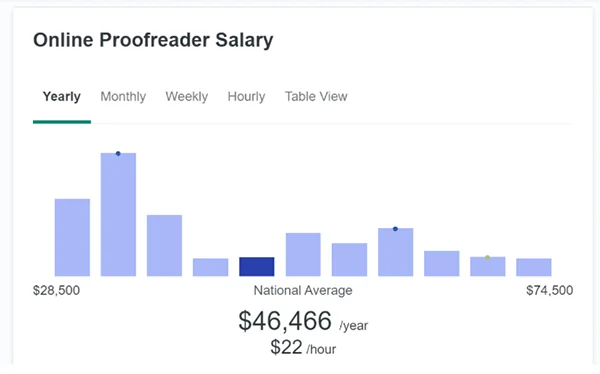Every student or professional has faced the challenge of how a simple punctuation error can change the meaning of a manuscript. Proofreading is a significant tool to elevate an average report to be flawless and refined.
Crafting a quality script is a meticulous process only deemed perfect after proofreading is complete. It polishes the writing like a sculptor rubbing pumice to smooth the texture of a marble.
For an editor, revising a draft can take more time if it lacks consistency, has spelling mistakes, and the format does not flow naturally. Therefore, there are novel editors for hire to assist in the writing procedure and compose polished work.
This article will guide you through the process of fine-tuning content before it is sent for publication.
Look For Grammar and Spelling Mistakes
A detailed work always stands out as a refined piece that is readable without any common mistakes. Checking grammar and spelling errors is the most underrated skill in the ChatGPT era. Everything is automated, but completely depending on a robot limits your learning capability.
Technology does have its pros and cons in connecting to students worldwide. For example, e-learning helps teachers guide students online to improve their writing.
You may anytime refer to several YouTube videos like https://youtu.be/Z7vPS53ENIA?si=MmpVYvoTR7WSGT1l, to gain deeper insights. However, quality and a human voice always win over a machine. For checking reports, take care of placement of commas, periods, subject-verb agreement, pronouns, and more.
An ideal method to revise notes is to step back after writing the complete manuscript, take a break, and return to it with a fresh perspective. By detaching the mind temporarily from the content, the approach towards editing becomes less overwhelming.
EXPERT TIP
Avoid using abbreviations or common slang as they are great conversation starters, but in writing may not appeal to the reader.
Rereading and Revision
The writing process starts with extensive reading, and for proofreading, it is relevant to reread the complete script. The reason for multiple checks is that it is a great way to reflect on the entire theme and flow of the writing.
The topic of the manuscript can be as easy as ‘The Impact of Pollution on Everyday Lives’ or ‘Social Work as a Profession’, it requires a format. Good content displays an organized thought pattern with meaningful examples. With tools like e-learning, learners can have expert guidance to achieve scholarships.
However, a lack of inconsistency can steal the reader’s interest, even if it is written on a valuable theme. Rereading helps identify reformatting paragraphs that seem out of place or are unnecessary.
Revision should be done carefully, sentence by sentence, of the manuscript, with every information added to the logical conclusion at the end. Efficiency is providing answers with clarity of thought, and with revision, you can share the knowledge in a better way.

Writing Style and Tone
Adhering to a style guide is quite common that showcases an individual’s personality, and the tone is the expression of the author’s attitude. These two elements of writing are the building blocks that differentiate varied content.
There are three types of tones – positive, negative, and neutral, with each having an emotional intensity that the writers want to evoke. Most problem-solving content on the internet focuses on catching the attention of the reader with a promise to provide the best solution.
Academic writing has a serious tone and should include all the relevant reports with facts to justify the conclusion. While proofreading, you need to have a clear image of the complete topic as well as maintain the coherence of all paragraphs.
The style of an article involves more than just using a formal or informal tone. Having a wordy length does not make great academic writing. In fact, it presents a complicated perspective that the readers may not be able to grasp.
Though, writing emails follows a semi-casual guideline, its tone and style also depend on the person to whom it is addressed.
The latest survey, in the graph below, shows the monthly and annual salaries of online proofreaders in dollars. As a beginner, you may expect to start at the low end, but with improved efficiency, you can expect to be paid more gradually.

Types of Sentence Structure
We have mentioned the importance of sentence structure earlier in this article, but understanding the level of formatting is also necessary. It is more than a sequence of thoughts, in fact, it depends on the type of publication that has hired you.
The types of writing can be advertising, business, magazine, or tech services, you need to follow the publisher’s guidelines to be approved.
Many writers like to start their careers by journaling on their favourite topics which gives them a sense of freedom. However, professional reports often have to dabble on various subjects before they gain experience and are in a position to opt for their niche.
If you are planning to embark on a journey to becoming a proofreader or a technical writer, there are some core skills you should learn.
- Attention to detail to spot errors quickly and redo the formatting.
- Strong written and verbal communication skills to express your opinions in the correct way.
- Familiarity with editorial style knowledge like AP and Chicago styles of content requirement.
- Manage independent projects by delivering quality content on schedule.
- Technical prowess in using Microsoft Word, Google Docs, and other editorial softwares.
Conclusion
Proofreading is a meticulous job that can be overwhelming at times when you are on a deadline. However, by using the suggestions mentioned in this article and practicing them consistently, it will become easier to understand the process.
Writing involves a lot of research, but training the mind to edit and then proofread it helps refine a report. The details in every paragraph should be informative and coherent achieving a flawless and comprehensible manuscript.







